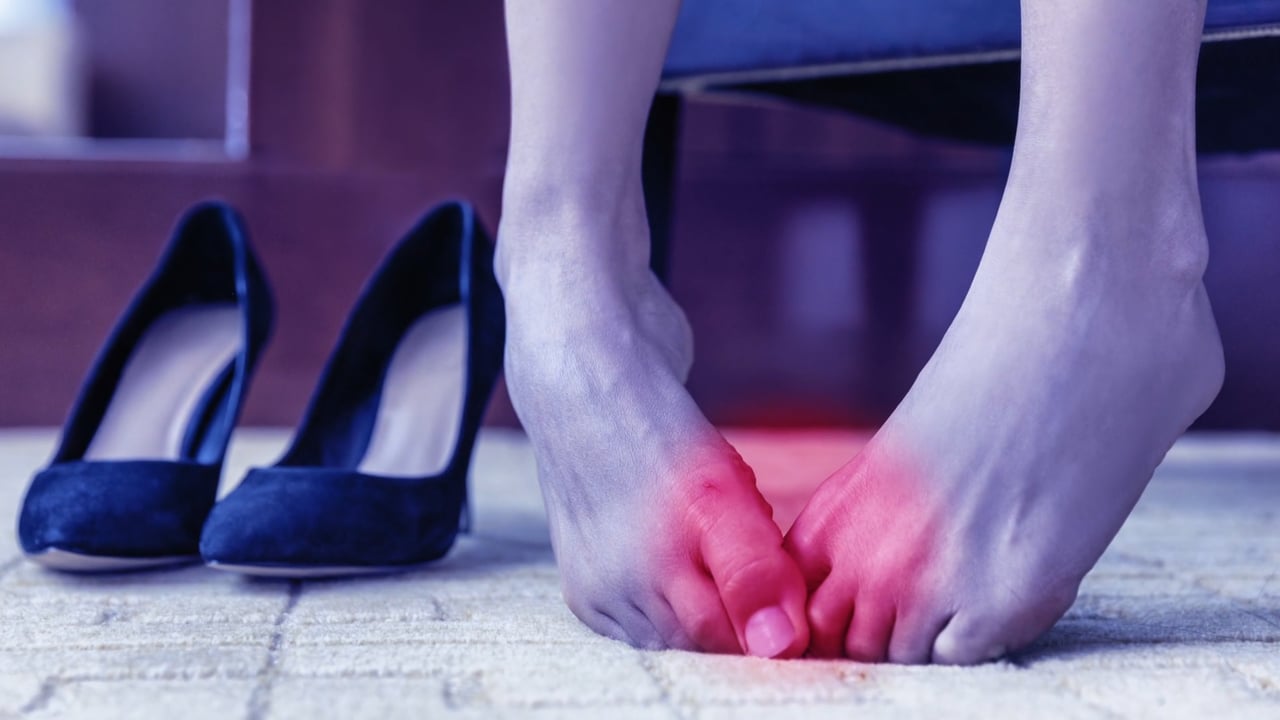Description
When two bones rub together, it often causes the outer coating of a nerve in your foot to swell. This swelling is most commonly referred to as Morton’s neuroma. It usually presents between the metatarsal heads of the third and fourth toe, but can occur elsewhere in the foot.
Causes
The exact etiology of Morton’s neuroma is still somewhat unclear. There are, however, a number of precipitating factors that can cause a localized irritation of the nerve which may contribute to the development of a neuroma. These factors are:
Footwear
Any shoe that is constricting in the forefoot can place excessive pressure on the nerves in the front of the foot. Morton’s neuroma is commonly seen in women who have worn high-heeled shoes for many years, or in men whose occupation puts excessive stress on the forefoot such as jobs involving prolonged kneeling, climbing ladders or which require constricting shoe-gear (e.g. construction boots, soccer cleats, etc).
Biomechanical Abnormalities
Instability (pronation) can predispose the foot to the development of a neuroma. The excessive pulling on the common digital nerve against the deep transverse intermetatarsal ligament results in irritation and eventually the development of the neuroma.
Treatments
Footwear
Modification of footwear can reduce the pain. This may include avoiding high-heeled shoes.
Orthotics
Custom shoe inserts adjust the structural support of your foot, helping to prevent irritation and remove the pressure from the nerve, thus allowing it to heal. Early treatment is critical as, once the neuroma has become permanently scarred, orthotics become less effective.
Injection
Anti-inflammatory medications can reduce the swelling in the nerve and offer temporary relief. These are recommended when other, more conservative therapies are insufficient on their own to heal the neuroma.
Sclerosing Injection
Sclerosing injections are a new therapy consisting of an injection which neutralizes pain fibers in the neuroma. A single weekly injection is given for four to seven weeks. This therapy has been very successful in helping patients resolve long-term neuroma pain and avoid surgery.
Physical Therapy
Ultrasound can be used in conjunction with other treatments to help the healing process.
Surgery
If the neuroma pain persists after the patient has undergone the above tretments, the nerve is likely permanently scarred or damaged and must be surgically removed. The surgery is done under local anesthetic and is often performed in the doctor’s office. Full recovery is expected in a few weeks. If surgery is an option, the doctor should discuss it with you thoroughly.
Neuroma pain is a very common problem and in most cases, is treated quickly and easily without requiring removal of the nerve. If you have any further questions or concerns, please ask the doctor during your appointment.




 604.264.1377
604.264.1377